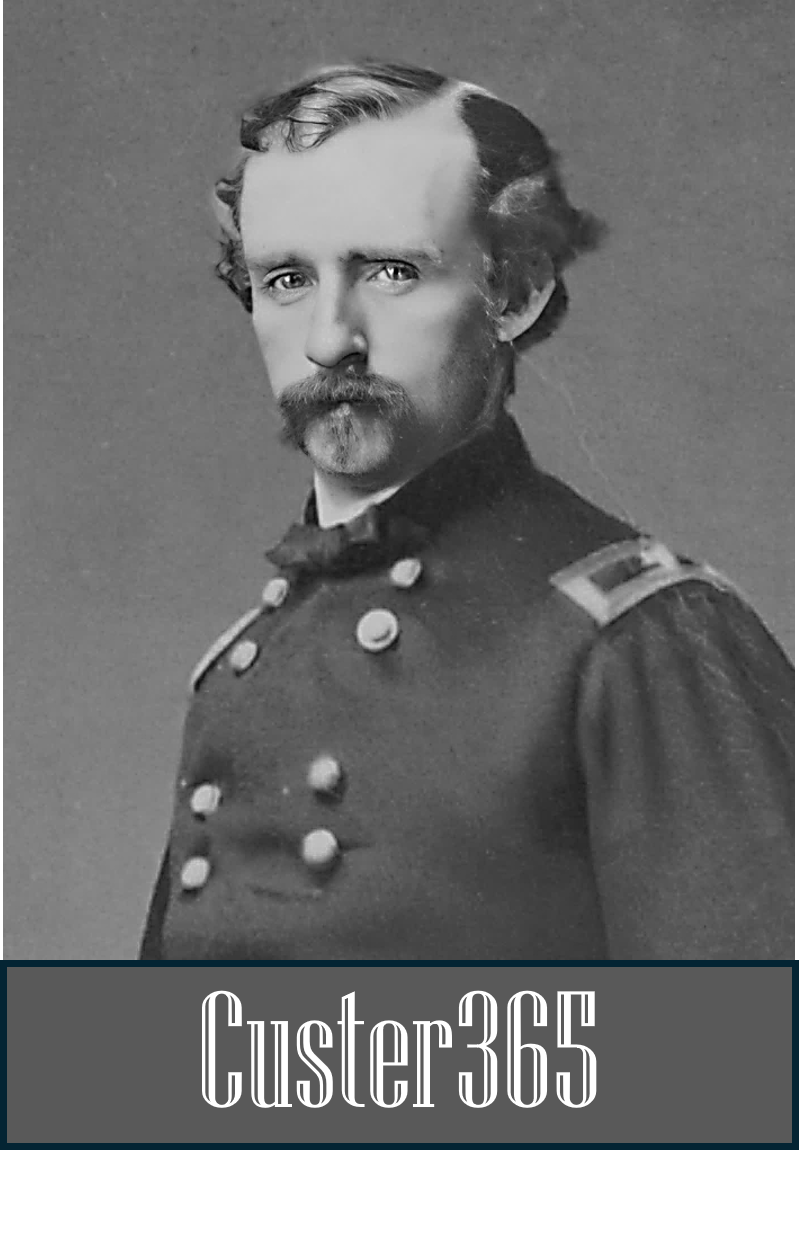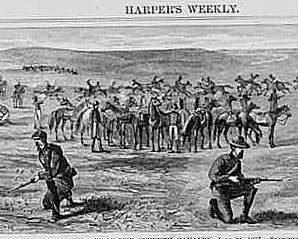AUG 4: First Fight with Crazy Horse
On Aug. 4, 1873, Lt. Colonel George Custer and the 7th Cavalry clash for the first time with local Lakota tribesmen at Honsinger Bluff along the Yellowstone River near present-day Miles City, MT.
Troopers prepare for an attack. (Credit: Library of Congress)
Custer and his troopers were assigned to protect a railroad survey party laying out the route for the proposed Northern Pacific Railroad. The new transcontinental railroad (the third to cross the U.S.) would pass through Sioux territory.
Custer’s men hadn’t fought in a single battle against tribes of the western Plains for two years. Custer treated the assignment as a good chance for some hunting. On August 4, he was well ahead of the rest of the force, camping along the Tongue River in southeastern Montana, when a large band of Lakota warriors, led by Crazy Horse and Sitting Bull, attacked. Custer got up from an afternoon nap and quickly mounted a defense. After a brief skirmish, the tribesmen withdrew.
One soldier and one Native American were killed in the skirmish. Custer’s first, relatively easy, encounter with Sitting Bull and Crazy Horse, according to History: This Day In History, “may have given him a dangerously scornful view of their fighting abilities. It helped to confirm his belief that the Plains warriors tended to flee rather than fight.”
Three years later, on June 25, 1876, Custer encountered Sitting Bull and Crazy Horse once again at Little Bighorn. This time his greatest fear was that they would withdraw, along with thousands of warriors, before he got the chance to attack. Given that, Custer rushed his plan to attack at dawn on June 26 and, instead, attacked late in the day on the 25th.
This time, the Native Americans took the fight to Custer and wiped him out along with 210 of his troops.


